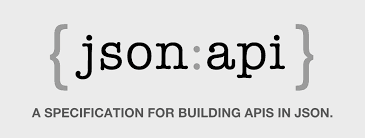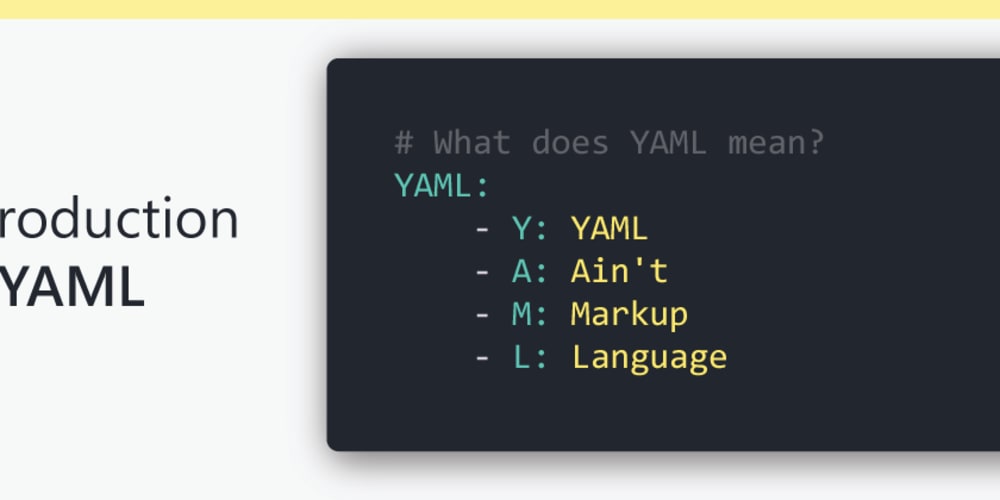What is JSON API?

JSON API is a standard for creating APIs that use JSON (JavaScript Object Notation) as the data interchange format.
It is intended to make the process of creating and consuming APIs easier by establishing a set of conventions and best practises. When working with APIs, JSON API promotes consistency, efficiency, and a better developer experience.
Its lightweight, human-readable format makes it simple to understand and debug, and its language independence ensures compatibility with a wide range of programming languages. Because of its simplicity, flexibility, and performance benefits in data exchange, JSON API has gained widespread adoption.
Why do we use JSON API?
1. Lightweight and Easy to Read
JSON (JavaScript Object Notation) is a lightweight data interchange format that is easy to read and write. Its simplicity makes it efficient for data exchange between clients and servers, reducing the overhead associated with data transmission.
2. Language Agnostic
JSON is language agnostic, meaning it can be used with various programming languages. This flexibility allows developers to choose the language that best suits their needs while maintaining compatibility with JSON APIs.
3. Wide Adoption and Support
JSON has been widely adopted by developers and organizations, leading to extensive support and resources. Many programming languages have built-in libraries for parsing and generating JSON data, making it easy to work with JSON APIs.
4. Faster Parsing and Serialization
Compared to other data formats like XML, JSON is faster to parse and serialize, leading to improved performance in data exchange. Its concise syntax and structure contribute to its speed, making it an ideal choice for web applications and APIs.
5. Human-Readable Format
JSON's human-readable format makes it easy for developers to understand and debug. Its clear structure and syntax facilitate better collaboration between team members, leading to more efficient development and maintenance of applications using JSON APIs.
JSON API vs. Other Data Formats
1. JSON API: Human-Readable and Lightweight
JSON API is a popular choice due to its human-readable format and lightweight nature, making it easy to understand and parse, especially when compared to formats like XML.
2. XML: Versatile but Verbose
XML is a versatile data format that can be used in various applications, but its verbosity and complexity can make it harder to read and parse compared to JSON API.
3. CSV: Simple but Limited
CSV is a simple and widely used data format, but it lacks support for complex data structures or relationships, making it less suitable for certain use cases compared to JSON API.
4. YAML: Human-Friendly but Less Common

YAML is another human-friendly data format that is easy to read and write. However, it is less commonly used in APIs compared to JSON API and might not be supported by all tools and libraries.
5. Protocol Buffers: Efficient but Less Readable
Protocol Buffers, developed by Google, offer a highly efficient binary serialization format, but their less-readable nature makes them more challenging to work with compared to JSON API for many developers.
Core Concepts of JSON API
1. Resource Objects
Resource objects represent individual entities in a JSON API. They consist of a unique identifier (type and ID), attributes, and relationships with other resources. By organizing data into resource objects, JSON API provides a clear and consistent structure for representing and interacting with data.
2. Document Structure
JSON API uses a specific document structure to organize and present data. The primary data is contained within the "data" key, while metadata, links, and included related resources are stored in separate keys. This structure helps maintain a clean separation of concerns and improves readability.
3. Relationships
Relationships in JSON API define connections between resource objects. They can be one-to-one, one-to-many, or many-to-many, and are represented using the "relationships" key within resource objects. Relationships enable clients to navigate between related resources and provide a flexible way to model complex data structures.
4. Compound Documents
JSON API allows for compound documents, which include both primary data and related resources in a single response. This reduces the number of HTTP requests needed to fetch related data, improving performance and simplifying client-side processing.
5. Sparse Fieldsets and Inclusion
Sparse fieldsets and inclusion are features of JSON API that allow clients to request only the data they need. Sparse fieldsets enable clients to specify which fields should be included in the response, reducing the amount of data transferred. Inclusion allows clients to request related resources to be included in the response, optimizing data retrieval and minimizing the need for additional HTTP requests.
How is JSON API Implemented?
1. Setting Up Your Server
Before implementing a JSON API, you need to set up a server that can handle HTTP requests and responses. You can use any technology stack you're comfortable with – Node.js with Express, Ruby on Rails, Django, etc. This server will process incoming requests, interact with your database or other services, and send back responses formatted according to the JSON API specification.
2. Designing Your Endpoints
When designing your API endpoints, JSON API recommends using a plural form of the resource type as the path. For instance, /users for a collection of users or /users/1 for a specific user. The HTTP verb (GET, POST, PUT, DELETE) indicates the action. Each endpoint should return well-structured JSON objects, following the JSON API structure of data, attributes, and relationships.
3. Formatting Your Responses
In a JSON API, responses should be wrapped in an object with a key named data. Each resource object in data must contain type, id, and attributes keys. type is the resource type, id is a unique identifier, and attributes contains the rest of the resource's data. If your resource is related to others, you'll also include a relationships key describing these connections.
3. Error Handling
Error handling is crucial in API implementation. According to JSON API standards, errors should be returned as an array of error objects under the key errors. Each object should contain status (the HTTP error status code), title, and detail (a more detailed description of the error). This allows clients to understand and handle errors gracefull
JSON API Best Practices
1. Use Consistent Naming Conventions
Adopt a consistent naming convention for your JSON API, such as camelCase or snake_case. Consistency makes it easier for developers to understand and work with your API, improving its usability and maintainability.
2. Pagination and Filtering
Implement pagination and filtering to manage large data sets and improve performance. Pagination allows clients to request data in smaller chunks, reducing the amount of data transferred and processed. Filtering enables clients to request specific data based on certain criteria, further optimizing data exchange.
3. Use HTTP Status Codes
Leverage HTTP status codes to provide meaningful error messages and responses. Proper use of status codes helps clients understand the success or failure of their requests and handle errors accordingly. This improves the overall usability of your JSON API.
4. Versioning Your API
Implement versioning for your JSON API to manage changes and updates without disrupting existing clients. Versioning allows you to introduce new features, fix bugs, and make improvements while maintaining backward compatibility for existing clients.
5. Documentation and Examples
Provide clear and comprehensive documentation, including examples, for your JSON API. Good documentation helps developers understand how to use your API effectively and reduces the learning curve. Including examples makes it easier for developers to see how the API works in practice and encourages correct usage.
JSON API Security Considerations
1. Authentication and authorization
Security is no joke, and JSON API is no exception. Always implement authentication and authorization to protect your API from unauthorized access. Popular methods include OAuth, JWT, or API keys. Remember, safety first!
2. Data validation and sanitization
Data validation ensures that only valid data makes its way into your API, while sanitization removes any harmful bits. JSON API doesn't have built-in validation or sanitization, but you can easily add it using your chosen web framework or a JSON schema validator.
3. Protecting against common security threats
To keep your JSON API safe from common security threats like SQL injection, cross-site scripting, and CSRF attacks, follow best practices like parameterized queries, content security policies, and secure tokens.
JSON API Performance Optimization
1. Caching strategies
Caching is the secret sauce of a high-performing JSON API. Use server-side caching techniques like ETags or Cache-Control headers, and client-side caching with service workers or local storage.
2. Compressing JSON data
JSON data can get bulky, but you can slim it down with compression techniques like Gzip or Brotli. Your server and clients will thank you for the lighter payload, making the whole data exchange process faster and more efficient.
3. Reducing API calls
Reducing the number of API calls is another way to optimize performance. You can achieve this by designing your API to return only the necessary data, and by using features like JSON API's compound documents to include related resources in a single response.
Real-world JSON API Use Cases
1. Web Development
JSON API is a gem in the crown of web development. It is a format that structures the data sent between the server and the client, making data exchange more efficient and organized. Whether you're developing a single-page application, a mobile app, or a complex web service, JSON API serves as the robust messenger between your frontend and backend, ensuring they speak the same language.
2. Real-Time Applications
If you've ever used a real-time application like instant messaging or live sports updates, you've been touched by the magic of JSON API. It's perfect for real-time applications because of its lightweight nature and ease of implementation. It allows real-time servers to push data to clients seamlessly, keeping everything live and kicking.
3. APIs for Mobile Apps
Ever wondered how your mobile apps communicate with servers to fetch data? Yes, you guessed it - often through JSON API! Its lightweight structure, combined with the ability to organize complex data into easy-to-understand formats, makes it the go-to choice for many mobile app developers.
4. Data Storage
JSON API isn't just about data exchange; it's also great for data storage. Its format is human-readable, and it's easy to write and parse, making it a handy option for storing data. If you've used configurations in applications or stored small amounts of data, you've likely encountered JSON files.
5. IoT Devices
The Internet of Things (IoT) is another area where JSON API shines. IoT devices generate a huge amount of data that needs to be processed and exchanged in real-time. JSON API's lightweight and flexible structure makes it an excellent choice for managing this data flow, helping our devices stay smart and connected.
FAQs
1. What is a JSON API?
JSON API is a specification for building APIs using JSON format, promoting best practices, efficiency, and consistency in API design and data exchange.
2. How does JSON API work?
JSON API structures data, metadata, and relationships between resources, allowing clients and servers to communicate and exchange data efficiently using JSON format.
3. What are the benefits of using JSON API?
JSON API offers standardized conventions, improved performance, reduced payload size, and easier API development, maintenance, and consumption.
4. How to create a JSON API?
To create a JSON API, follow the JSON API specification, design your data model, define resource relationships, and implement server-side code to handle requests and responses.
5. What programming languages support JSON API?
JSON API is language-agnostic, meaning it can be implemented in any programming language that supports JSON parsing and serialization, such as JavaScript, Python, Ruby, or PHP.

